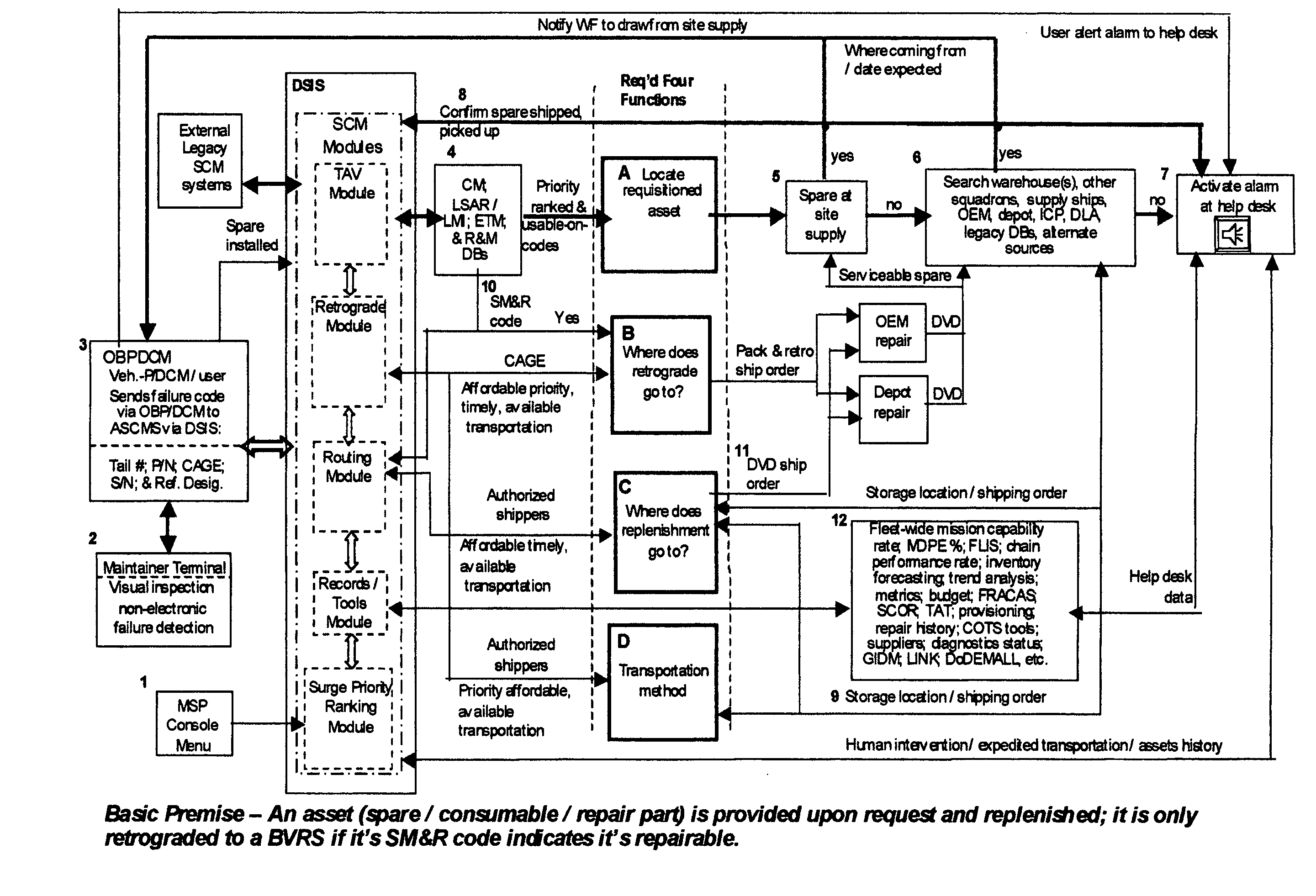Adaptive network-centric online autonomic supply chain management system
a supply chain management system and autonomic technology, applied in the field of adaptive network-centric online autonomic supply chain management system, can solve the problems of inability to meet the requirements of agile scm high speed delivery, high cost of processing unit time, etc., and achieve the effect of greater efficiencies
- Summary
- Abstract
- Description
- Claims
- Application Information
AI Technical Summary
Benefits of technology
Problems solved by technology
Method used
Image
Examples
Embodiment Construction
General:
[0024] Keystone features of an autonomic system are: (I) a computer generated minimum 4-decimal place surge / calm priority ranking of each operational units vehicle. This is accomplished by inputting by a planner to a menu at the MSP console as squadron tempo increases / decreases. This ensures that a vehicle in a combat zone or other increased tempo receive priority over others lesser ranked; (2) an Off-Board Predictive / Diagnostic Condition Management (OBPDCM) system that assigns one of three IFP codes—from highest to lowest, namely: Grounded Vehicle, Not Grounded Emergency, or Routine are assigned for determination of TDDS by global location of requester. For non-PDCM failures such as a visual inspection, the IFP defaults to “Routine,” with user permitted to request help desk approval to change to Grounded Vehicle, or Not Grounded Emergency requisition status. When authorized by higher authority if a requisition contains a FAD of 1, or other To Be Determined (TBD) ranking b...
PUM
 Login to View More
Login to View More Abstract
Description
Claims
Application Information
 Login to View More
Login to View More - R&D
- Intellectual Property
- Life Sciences
- Materials
- Tech Scout
- Unparalleled Data Quality
- Higher Quality Content
- 60% Fewer Hallucinations
Browse by: Latest US Patents, China's latest patents, Technical Efficacy Thesaurus, Application Domain, Technology Topic, Popular Technical Reports.
© 2025 PatSnap. All rights reserved.Legal|Privacy policy|Modern Slavery Act Transparency Statement|Sitemap|About US| Contact US: help@patsnap.com



